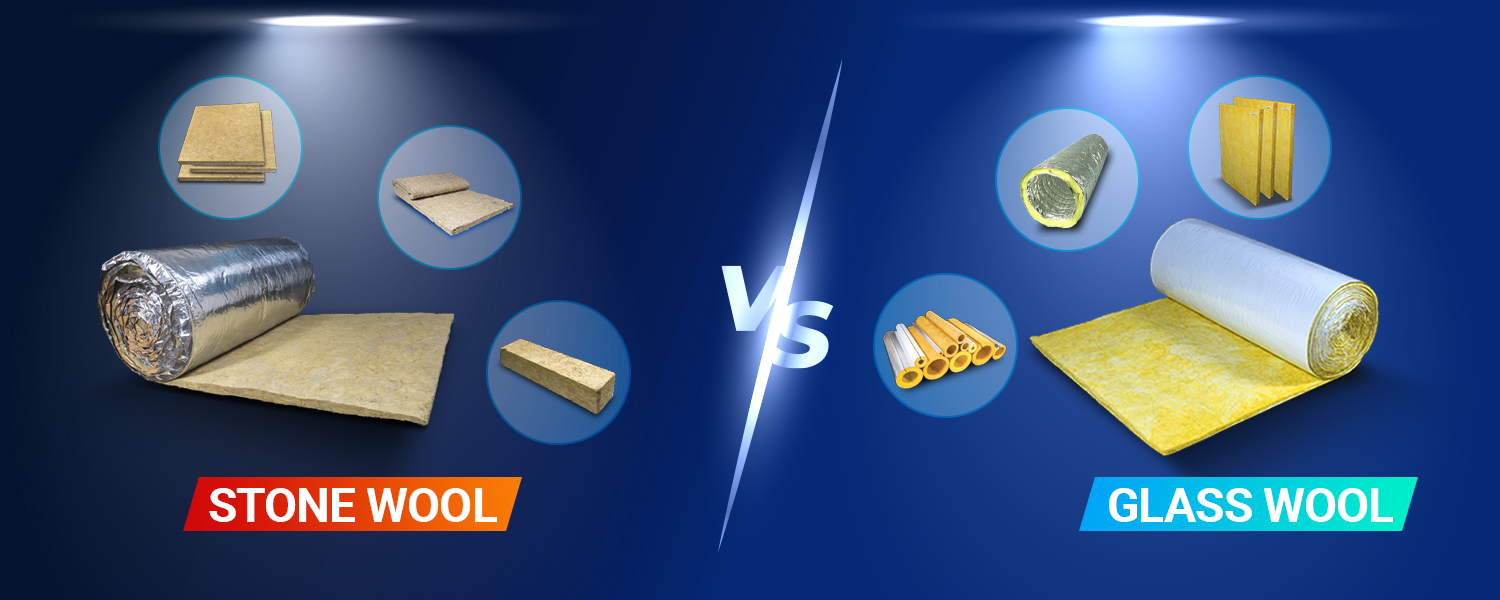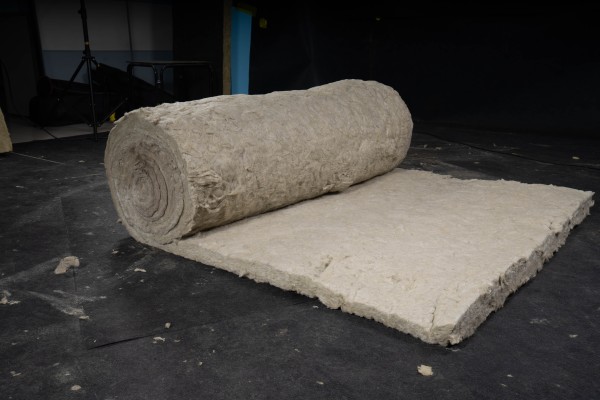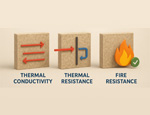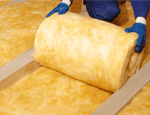- Blogs
- Glass Wool vs. Stone Wool: Which Insulation is Right for Your Building?

When it comes to building construction and HVAC systems, choosing the right insulation material can make all the difference, from energy efficiency and acoustic comfort to fire safety and sustainability.
Two of the most widely used insulation solutions are Glass Wool and Stone Wool. While both belong to the mineral wool family, they are engineered differently, offering unique advantages for various applications.
So, how do you decide which one is right for your project? Let’s break it down.
Glass Wool – Lightweight and Versatile

What it’s made of: Recycled glass melted at high temperatures and spun into fine fibers, bonded to form blankets, boards, or rolls.
- Composition: Silica and recycled glass
- Texture: Light, compressible, easy to handle
- Appearance: Yellow and fibrous
- Temperature Range: Up to 230 °C
Where it works best:
Glass wool is ideal where thermal insulation and acoustic comfort are top priorities. Its lightweight and resilient structure makes it perfectly suited for:
- Drywall partitions
- Suspended ceilings
- HVAC ducts
- Residential and commercial roofing
Because of its fine fibers, glass wool resists vibration and settlement over time, ensuring consistent performance throughout the building’s lifecycle.
Stone Wool – Strong and Fire-Resistant

What it’s made of: Natural volcanic rocks like basalt and dolomite, melted and spun into dense fibers, compressed into rolls or slabs.
- Composition: Basalt and Dolomite
- Texture: Dense and rigid
- Appearance: Brown and fibrous
- Temperature Range: Up to 750 °C
Where it works best:
Stone wool’s strength lies in its fire resistance and durability. Its higher density makes it the right choice for demanding applications such as:
- Façades and external walls
- Fire-stop barriers
- Industrial furnaces
- Process plants and high-temperature installations
Thanks to its rigidity, stone wool can withstand mechanical loads and thermal stress without losing shape, ensuring long-lasting safety and performance.
Glass Wool vs. Stone Wool – A Quick Comparison
| Parameter | Glass Wool | Stone Wool |
|---|---|---|
| Fiber Quality | Fine, resilient; withstands vibration | Coarser, denser |
| Thermal Insulation | Excellent (0.030–0.041 W/m.K) | Very good (0.035–0.040 W/m.K) |
| Acoustic Absorption | Superior, especially in partitions | High, but slightly less in partitions |
| Fire Resistance | Non-combustible; up to 230 °C | Non-combustible; withstands 750 °C |
| Density | 12–96 Kg/m³ | 40–120+ Kg/m³ |
| Health & Safety | Biosoluble, EUCEB certified | Biosoluble, EUCEB certified |
| Sustainability | ~60% recycled content | Made from natural volcanic rocks |
| Handling | Lightweight, flexible, easy to cut | Heavier, rigid, requires careful handling |
Durability and Long-Term Reliability
Beyond immediate performance, durability defines the true value of insulation:
- Glass Wool maintains its resilience and shape even after years of vibration or thermal cycling, making it reliable for HVAC systems and partitions with minimal maintenance.
- Stone Wool is inherently robust and dimensionally stable, performing exceptionally in fire-rated and high-stress applications such as façades and industrial systems.
Both solutions comply with international fire safety and insulation standards, ensuring buildings remain safe, efficient, and sustainable.
Choosing the Right Insulation
There’s no “one-size-fits-all” answer. Glass Wool excels in applications where comfort, flexibility, and lightweight installation matter most. Stone Wool is the choice when fire safety, mechanical strength, and high-temperature resistance are critical.
At Saint-Gobain Insulation, we bring the strength of both solutions, backed by global expertise and local manufacturing, to help you build better, safer, and more sustainable spaces.
If you are looking to learn more or have a query about insulation solutions, feel free to reach out to us at sgindia.insulation@saint-gobain.com”.
Latest Blogs




